Chinese dining in the sky at Jin Ting Wan
Marina Bay Sands’ newest playground impresses with its opulence, while the food is still a work in progress
NEW RESTAURANT Jin Ting Wan 10 Bayfront Avenue Tower 1, Level 55 Marina Bay Sands Singapore 018956 Tel: 6688-9969 Open daily for lunch and dinner: 11.30 am to 2.30 pm; 5.30 pm to 9.30 pm.
[SINGAPORE] You have to give it to Marina Bay Sands: it doesn’t do anything in half measures.
With typical “go big or go back to your hutong” aplomb, it has created its very own Chinese period drama in the sky: a sprawling, 55th-floor Song Dynasty-esque vista of epic proportions, a vision of lacquer and imperial splendour rendered in equal parts pomp and restraint. All that’s missing is an emperor sitting in its cosy tea lounge, sipping aged pu’er and spouting literary verse.
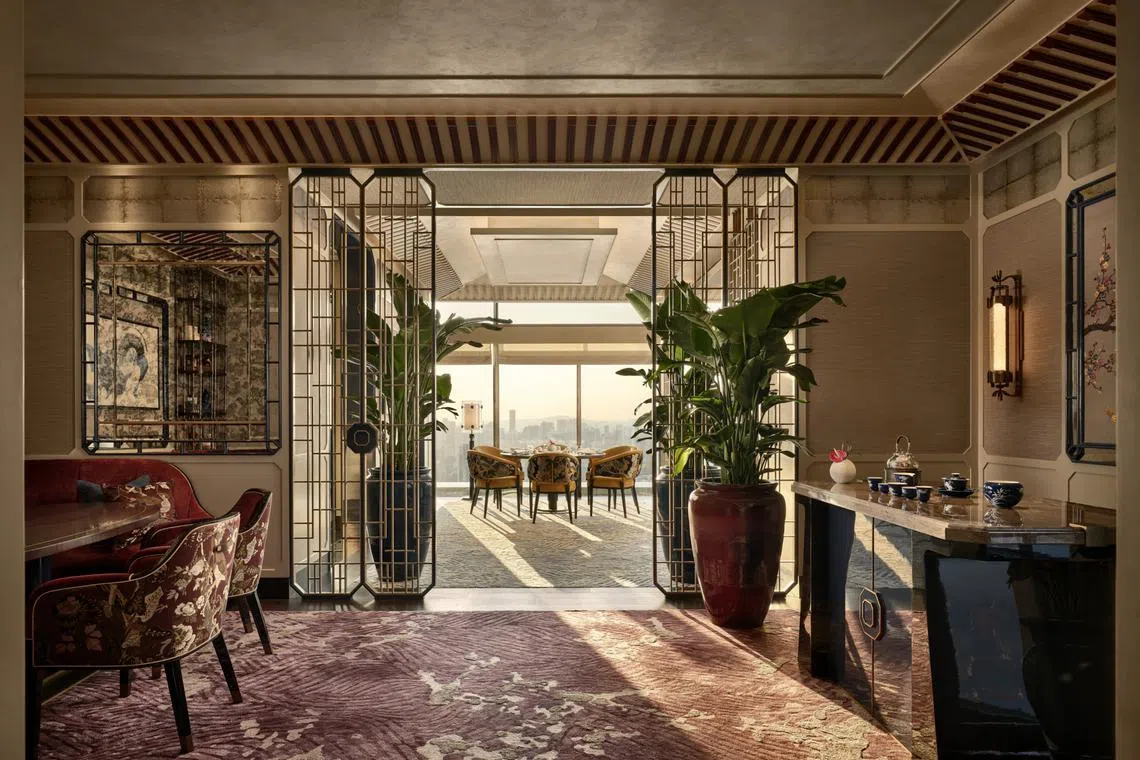
With its no-expense-spared decor and prime National Day fireworks-level view, you can see where Jin Ting Wan is going. It’s aimed at the high-rolling, mostly non-local crowd, used to the trappings of top-ranked Chinese restaurants in the likes of Beijing, Shanghai or even Macau. But being in Singapore, it also attracts curious outliers like us – the kind with less money but more complaints.
So expect us to gripe about the lack of munchies on the table – a mainstay in China’s high-end restaurants which ply you with fresh fruit and Chinese New Year-worthy snacks even before you order. There are no pickles or candied walnuts in sight, so you have to make do with sampling a trio of chilli condiments.
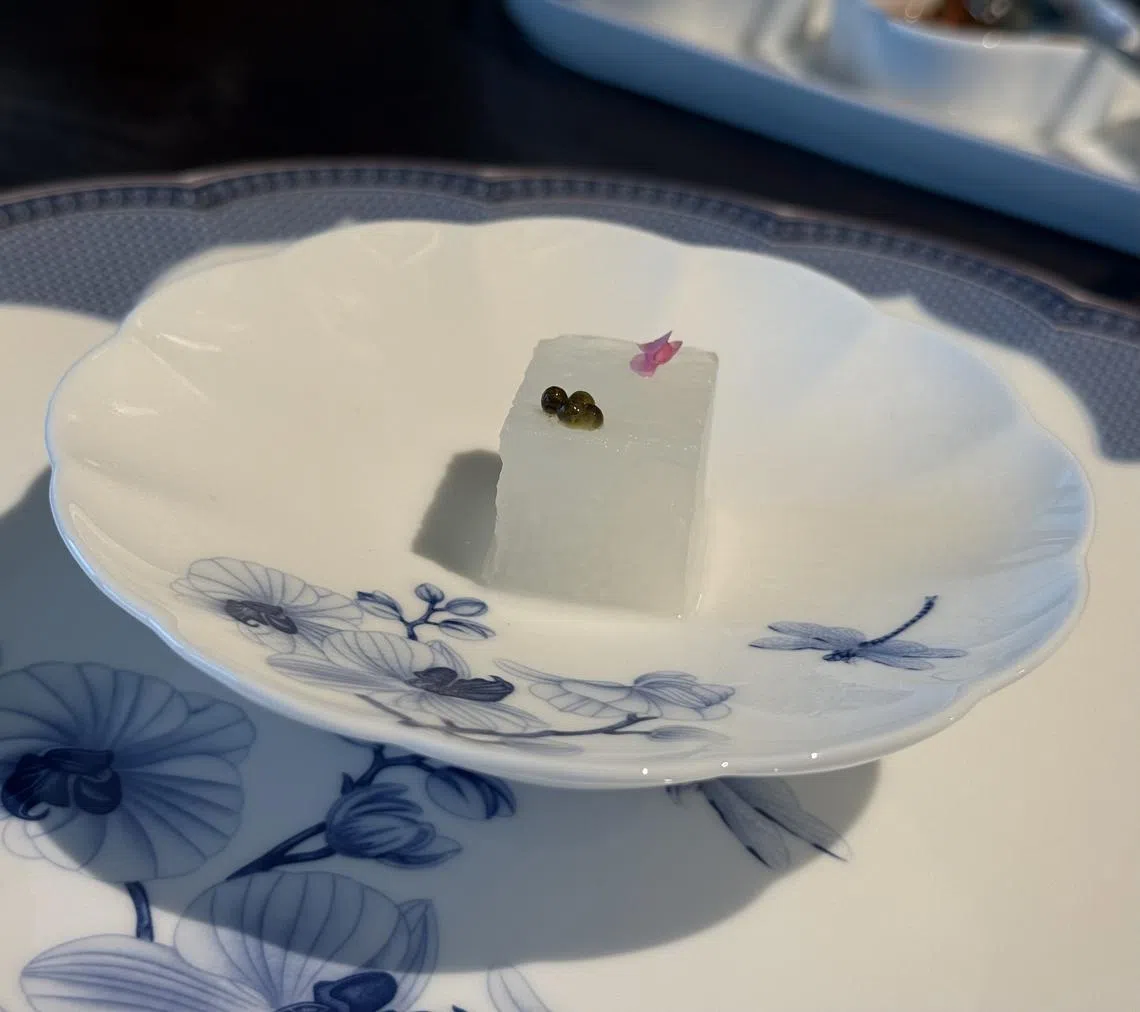
Eventually, though, you’re fed an amuse bouche. A single square of winter melon is presented like a piece of still art: pristine, slightly pickled, garnished with four pearls of caviar and a single pink flower petal. A hint of chilli. It’s presented with a proud flourish. Not sure if we’re supposed to clap.
Pricing-wise, it skews high but not unbearably so unless you have a taste for braised 10-head dried Oma abalone at S$1,588. Or Japanese snow crab at S$268 per 100 g – maybe enough for the lower half of one leg. Otherwise, you can get dim sum in the S$12 to S$16 range, and for dinner, there’s a tasting menu for S$158 or S$198 per head that looks to be pretty good value.
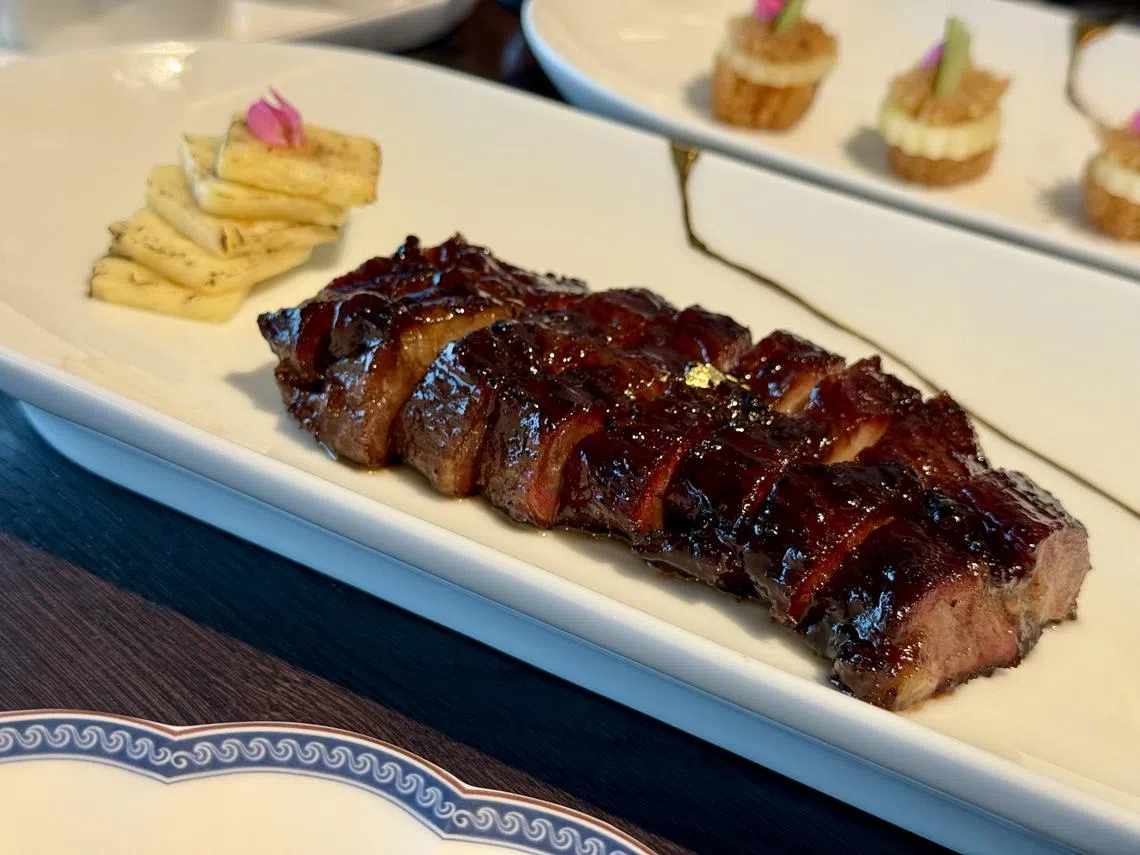
If you go a la carte, prepare for some pain, but with some pleasure points. We start well with honey-glazed iberico char siew (S$52) – not as charred as it should be, but fatty and meaty, and paired with slices of broiled pineapple in a surprisingly perfect match.
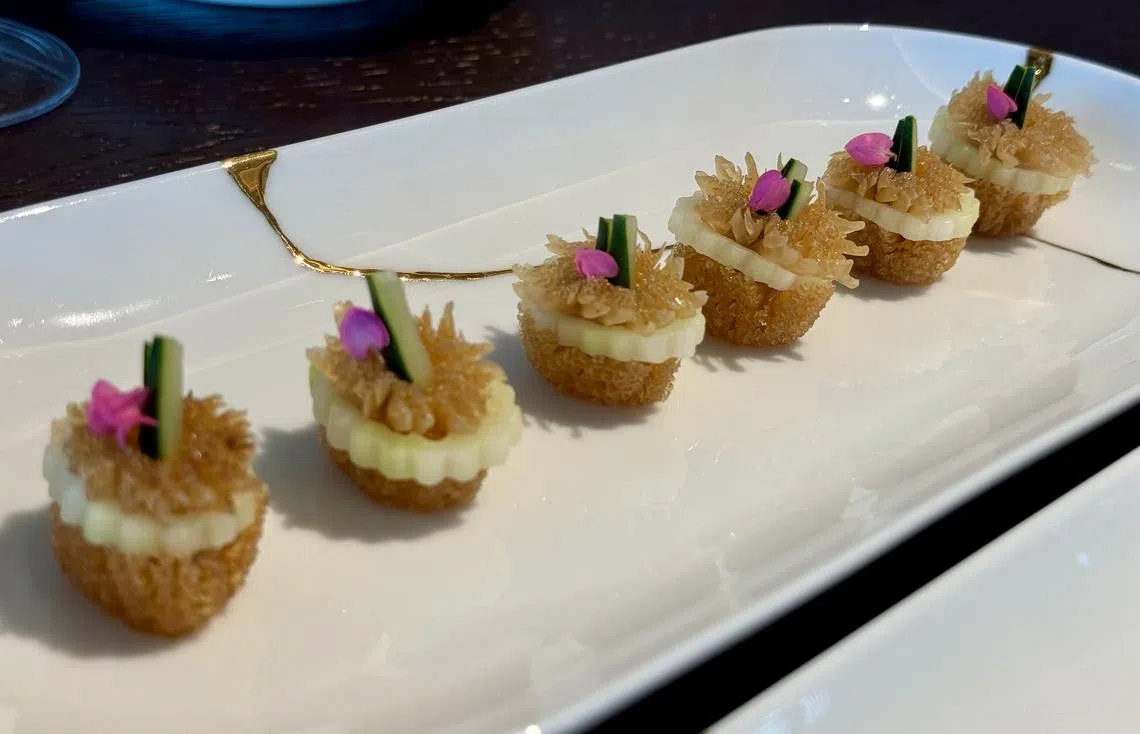
Some fingers may have been sacrificed in cutting marinated jellyfish (S$26) into delicate chrysanthemum shapes, but we appreciate the effort. They’re crinkly crunchy, delicately infused with sweet black vinegar, and paired with cucumber.
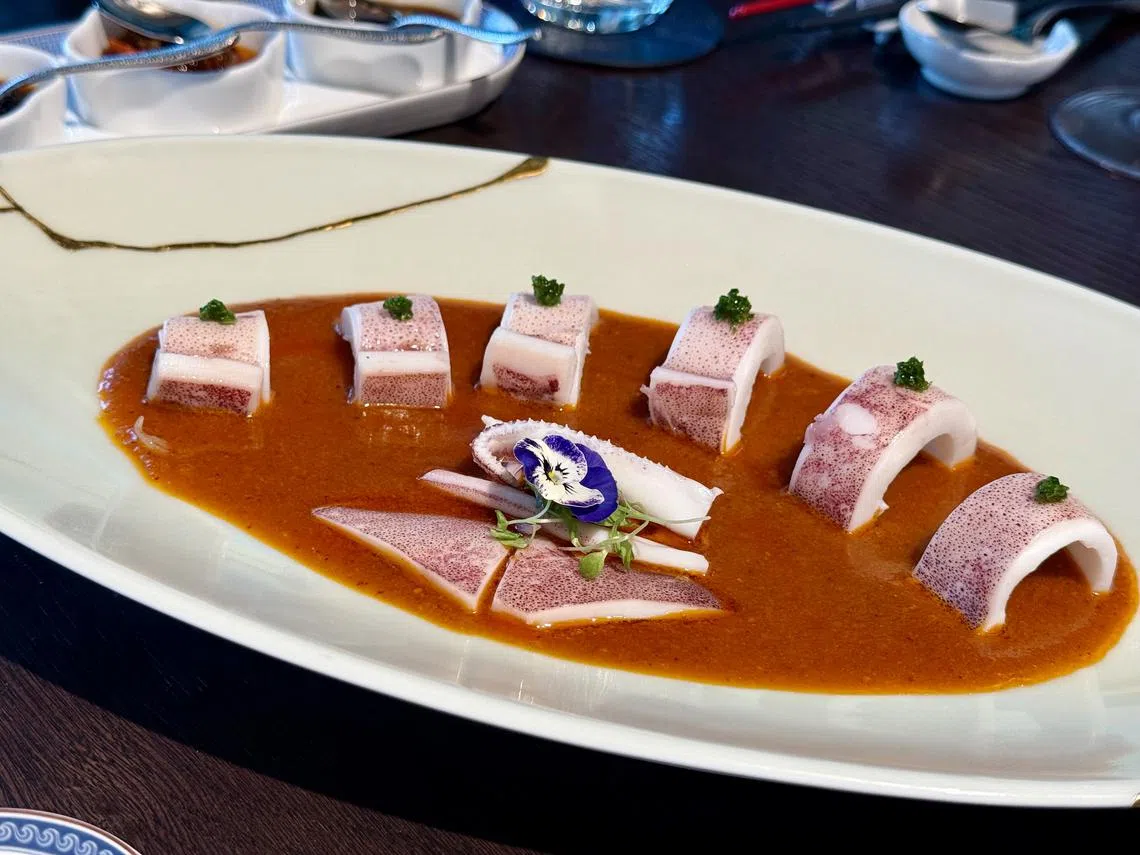
Hokkaido squid is overpriced at S$98, but super addictive. It’s blanched and chilled for an ideal smooth and tender bite, bathed in a creamy peanut chilli oil dressing. You can also choose a scallion sauce, similar to the kind you get with poached chicken. They’re kind enough to give us a little taste of it.
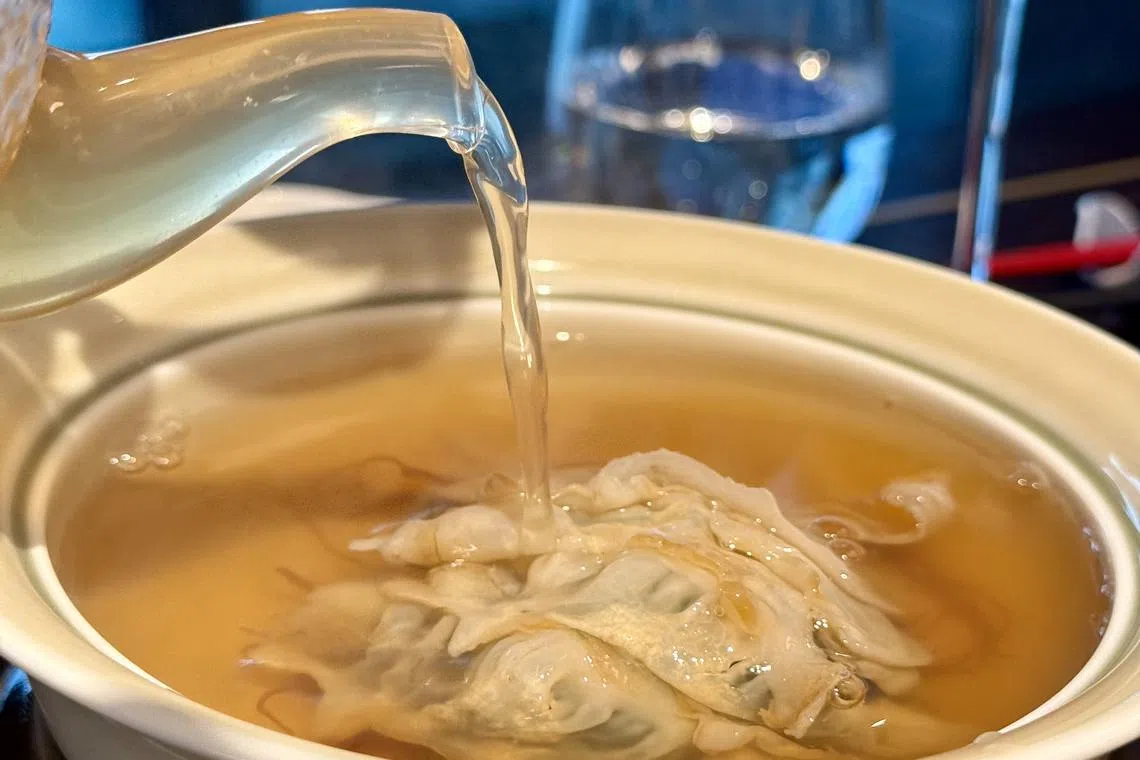
Next, thin slices of raw geoduck are instantly poached in a bath of clear seafood stock (S$48) that’s intensely flavoured with squiggly bits of seaweed thrown in for good measure. Less exciting is the braised spotted coral grouper soup (S$48): a starch-thickened broth packed with thin slices of slippery fish, wood ear fungus and slivers of kaffir lime leaf to break the monotony.
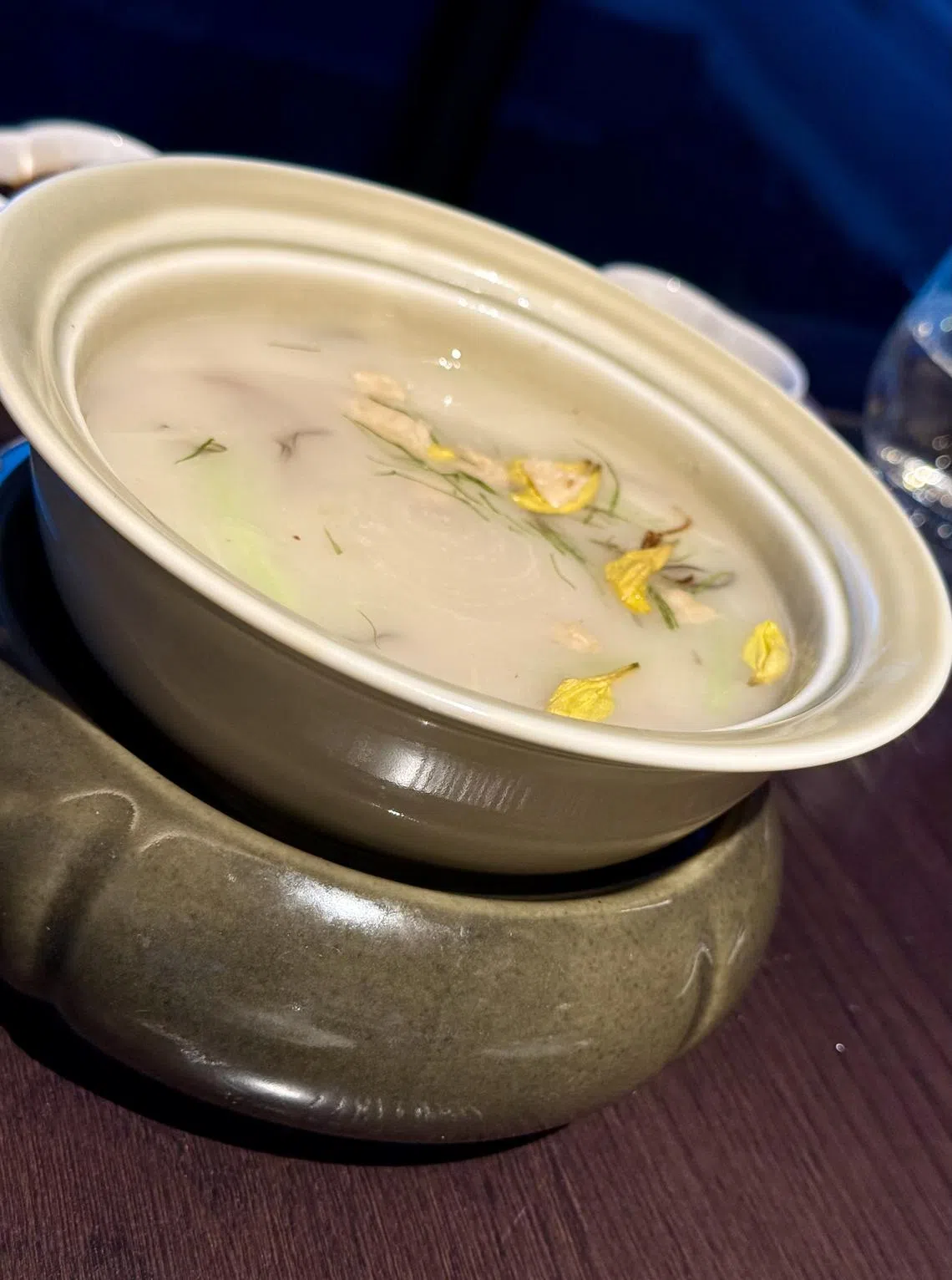
The same fish broth without thickening appears again, simmered with homemade yuba and spinach (S$28), topped with very sweet goji berries. Healthy, but hardly exciting.
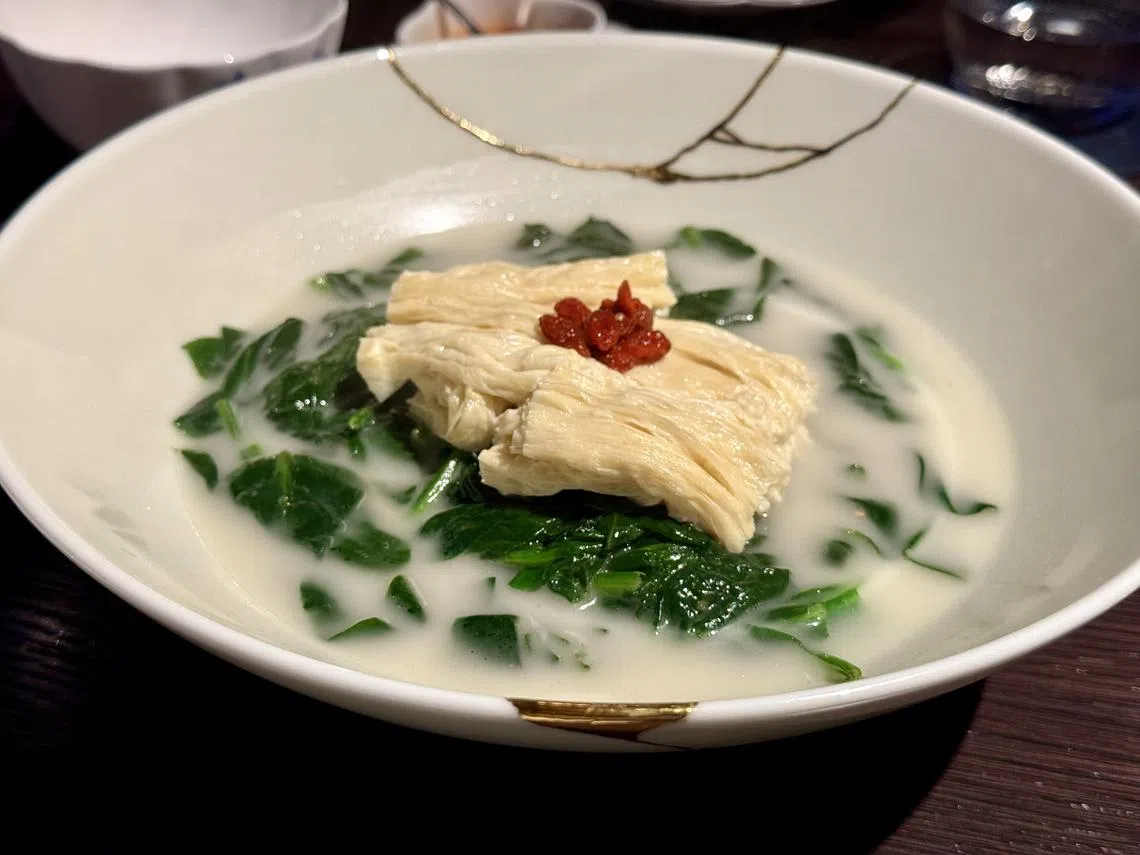
We’re also ambivalent about the Angus short ribs (S$78) cooked with preserved vegetables and wrapped in straw. Much as we’re attracted to the traditional cooking method, this earthy, dry-ish and salty beef version of Hakka mui choy doesn’t really do justice to it.
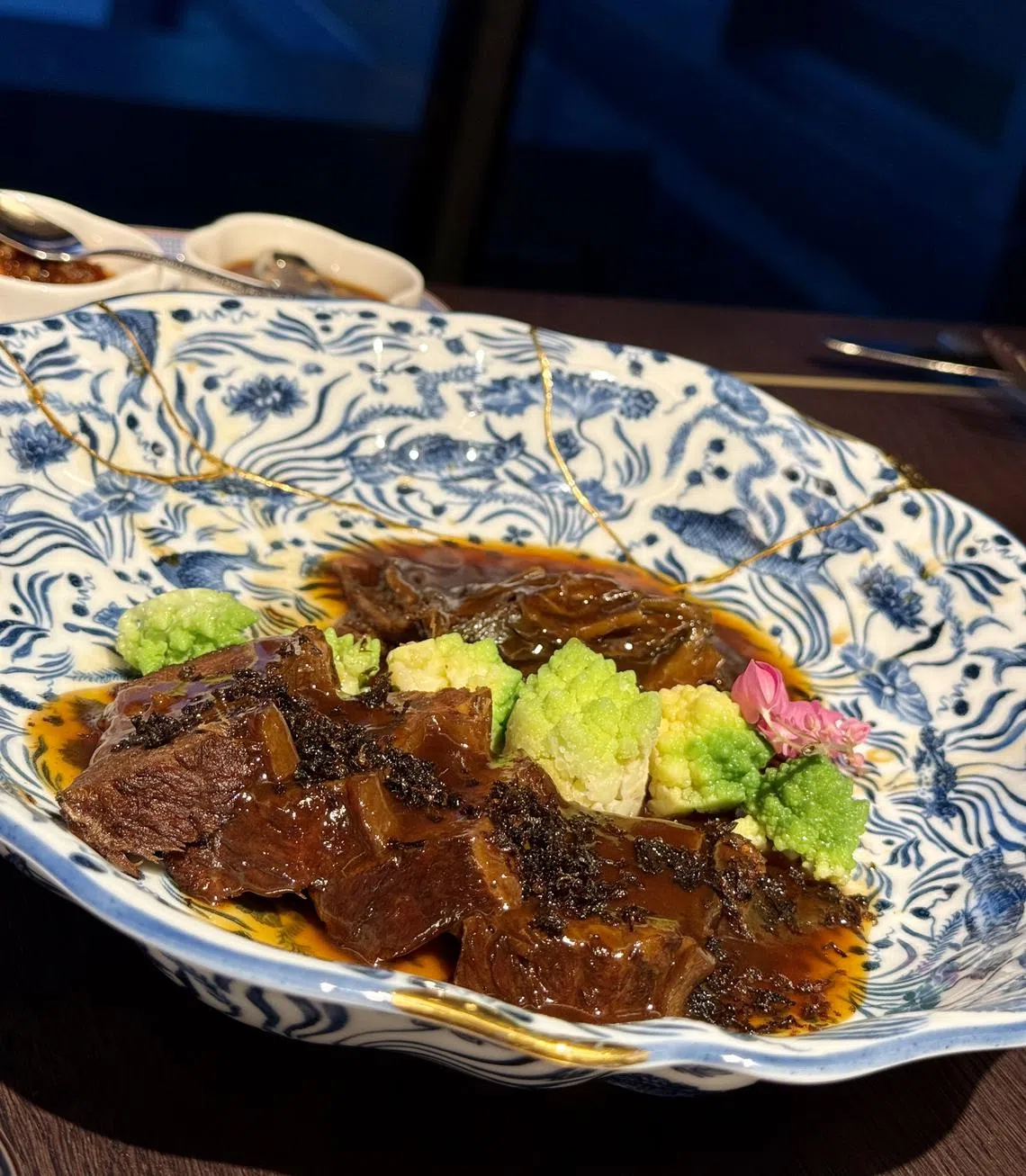
A poached jumbo tiger prawn (S$48) is huge and intricately sculpted into a flower shape, laid over a bed of steamed egg white covered in a bisque-like sauce. It is pretty but one-dimensional, topped with pearls of pomegranate vinegar that taste like melted gummi bears. It’s like, wrong bear, wrong place.
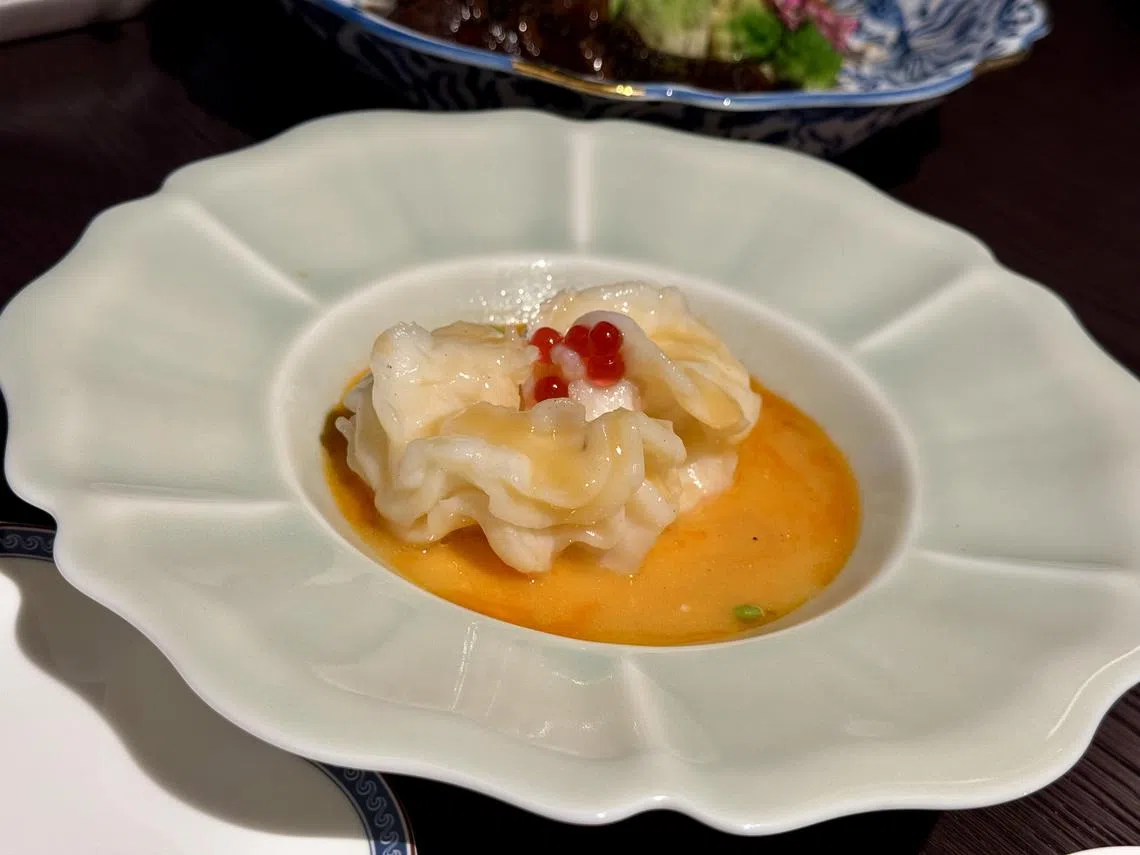
Before dessert, you’re treated to some show-and-tell where you’re presented with a scary, ancient-looking black mass protected under a cover of glass (to either protect it or us from its possibly supernatural powers).
It looks like a gigantic preserved plum or the embalmed remains of an emperor’s pet cat, but whatever. It’s really a dried Buddha’s hand fruit, and it makes a deliciously refreshing cold sweet tea.
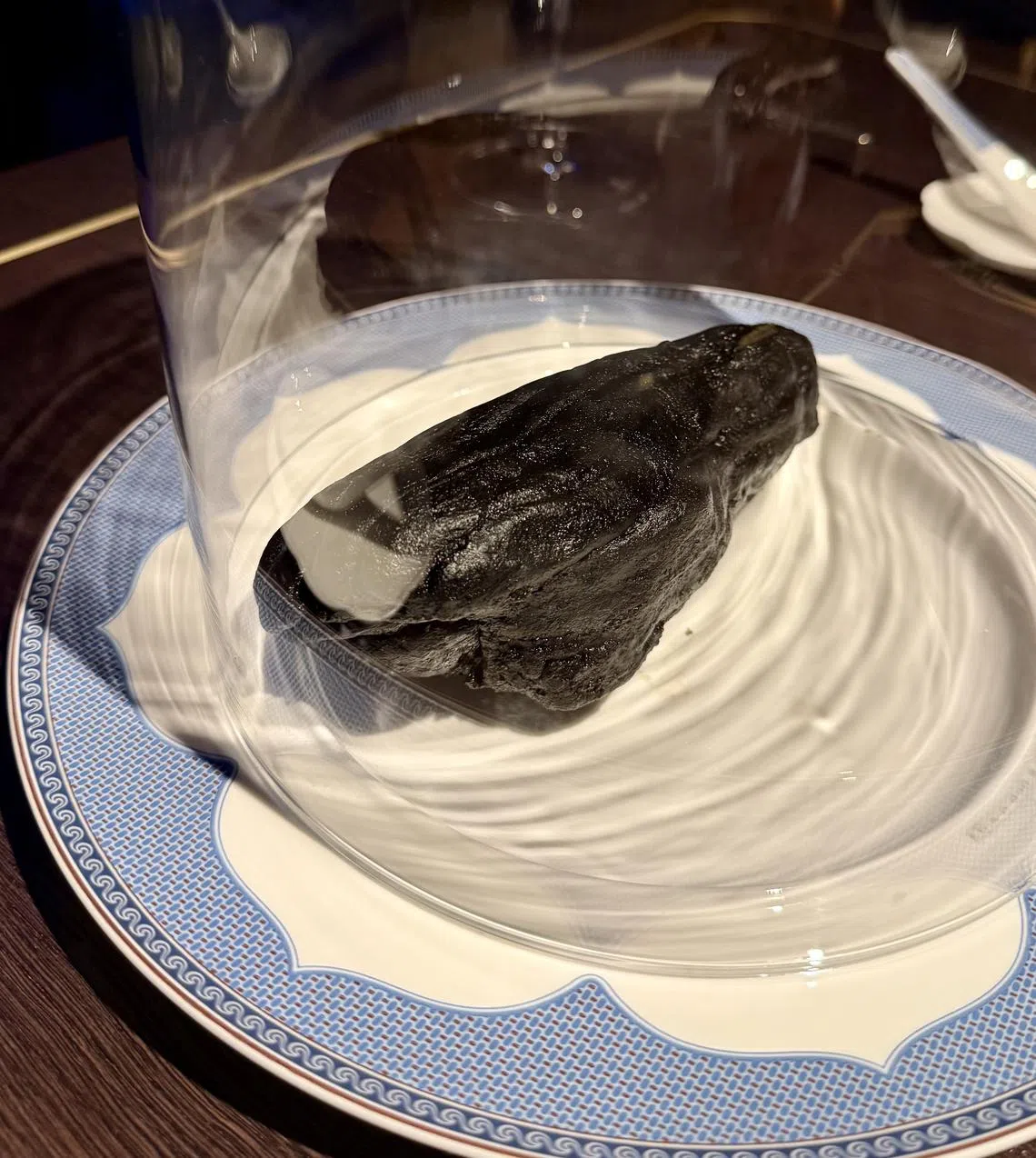
For dessert proper, there’s red bean soup made with 15-year-old tangerine peel (S$15). But old age tends to make people and orange skin bitter, so you need to have a taste for that if you’re going to enjoy this otherwise thick and rich, not-sweet-enough ending.
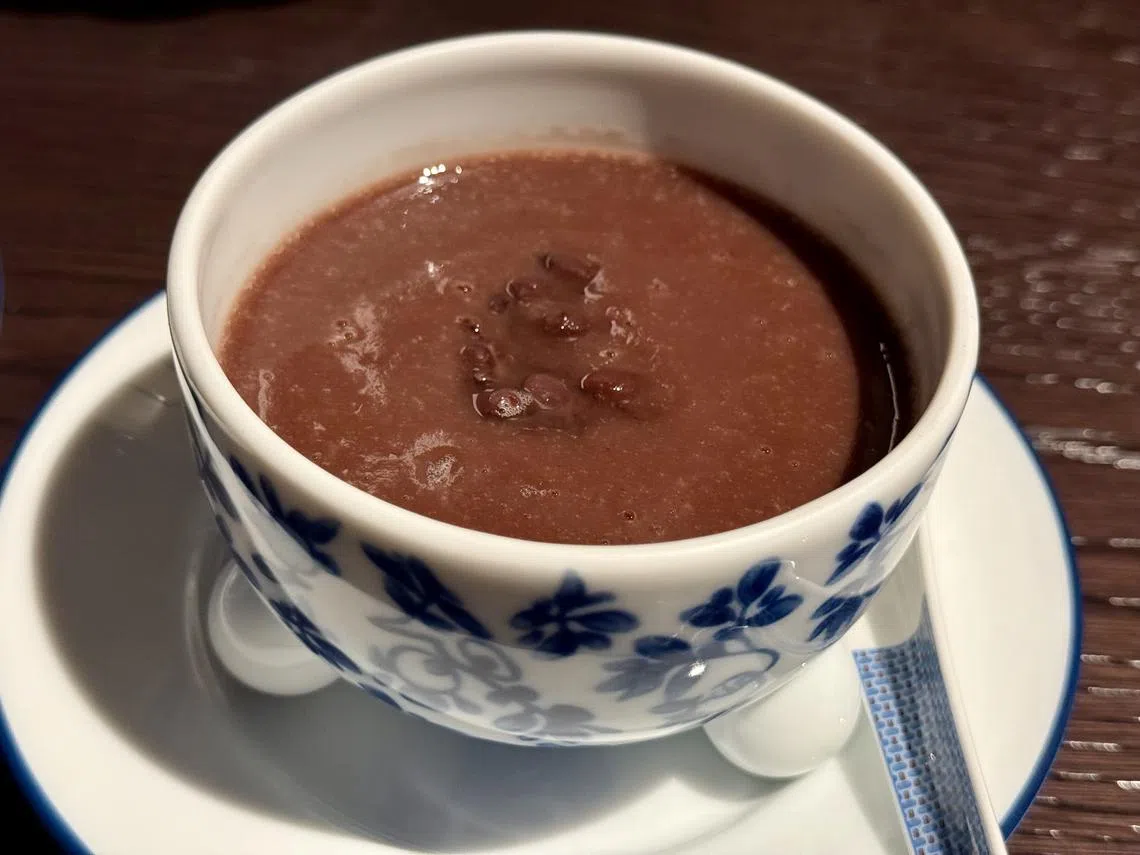
Or you could get the water chestnut soup with golden fungus, jasmine and lime zest (S$15) – nice, except the strong jasmine scent makes it feel like eating dessert next to a flower garland seller in a Thai market.
Jin Ting Wan is visually stunning, service is polished if not perfect, and the food veers between good and underwhelming. The dilemma is that it sets the bar very high, and expectations follow. The effort is there, but identity and direction less so. Inconsistent execution doesn’t help. It’s been only a month, so it still needs to find its way to make an impact worthy of its height.
Rating: 6.5
Decoding Asia newsletter: your guide to navigating Asia in a new global order. Sign up here to get Decoding Asia newsletter. Delivered to your inbox. Free.
Copyright SPH Media. All rights reserved.













